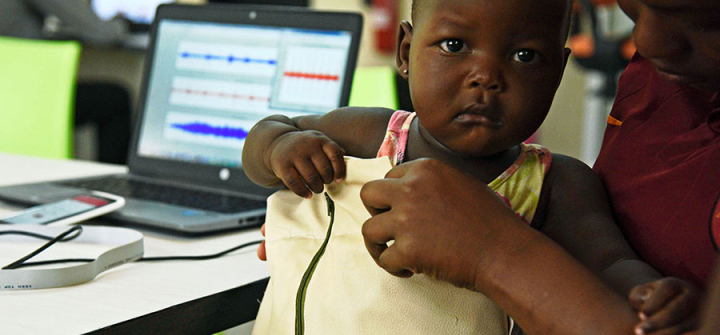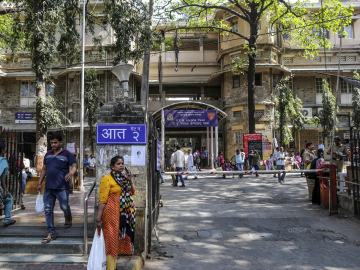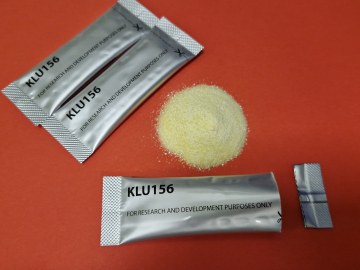Global Forum Renews Political Will on Childhood Pneumonia
While the global health community has mobilized swiftly against the Wuhan coronavirus, preventable childhood pneumonia kills more than 800,000 children each year—making it more lethal than HIV, malaria, and tuberculosis combined.
“Pneumonia has fallen through the cracks. There’s no global institution responsible for pneumonia—quite shocking given that it’s been the leading killer of children for decades,” says Leith Greenslade, coordinator of Every Breath Counts, a public-private partnership devoted to childhood pneumonia.
To advance solutions for this “global cause without champions,” scientists, global health leaders, and health ministers of high-burden countries convened in Barcelona last week in a first-ever Global Forum on Childhood Pneumonia. Their goal: To develop an action plan to end the preventable deaths from this historically neglected illness.
Childhood pneumonia primarily impacts highly vulnerable, poor populations—a big reason why it is less visible than other lower-burden diseases.
Greenslade noted that if the novel coronavirus spreads to Africa, it could be catastrophic for African children in particular, who already have a vulnerability to childhood pneumonia, due to compounding risk factors among certain populations. And, if the coronavirus outbreak increases cases of childhood pneumonia, it could set back the Sustainable Development Goal 3.2 for ending preventable newborn and child deaths by 2030.
Already, the rate of mortality from childhood pneumonia is decreasing slower than other major causes of child death (such as malaria, diarrhea, and measles), says Kevin Watkins, Save the Children UK’s chief executive.
Scaling up childhood pneumonia interventions could save nearly 9 million children over the next decade, as new research from the Johns Hopkins Bloomberg School of Public Health unveiled at the forum shows. Better nutrition, antibiotics and vaccine coverage, and exclusive breastfeeding could also save millions of children who might otherwise die from diarrhea, sepsis, and measles.
“That’s why we’re starting to call pneumonia a smart strategy for the SDGs,” says Greenslade. “If you focus on pneumonia control, you can save 3 million from pneumonia, and you get this ripple effect … that is, I think, a strong argument for governments to think about pneumonia.”
The forum encouraged high-burden countries to develop pneumonia action plans outlining concrete strategies for controlling childhood pneumonia, highlighting several themes:
1. Develop multi-sectoral partnerships to reduce deaths
There are a number of risk factors for childhood pneumonia, such as measles, exposure to air pollution, wasting and other nutritional deficiencies—a complex mix requiring health ministries to partner with different entities. For example, interventions around nutrition alone could save the lives of nearly 4 million children in the next decade, according to Johns Hopkins research.
2. Place vulnerable populations at the center of pneumonia strategy
Bacterial childhood pneumonia can be prevented by pneumococcal conjugate vaccines and treated using $0.50 antibiotics. In the forum’s final declaration, health ministers for high-burden countries—such as Nigeria—committed to developing and implementing plans that prioritize pneumonia control and treatment for vulnerable populations.
3. Build health systems with pneumonia-specific strategies—but integrate delivery
In their article Childhood pneumonia: A global cause without champions, Watkins and Devi Sridhar caution against focusing on vertical programming for pneumonia; they encourage national governments to invest more in health system strengthening and training community health workers on proper pneumonia diagnostics and treatment.
4. Invest in technical solutions and equipment
“At the moment no international organization is responsible for supporting LMIC governments to pay for pulse oximeters, medical oxygen or amoxicillin,” says Greenslade via email. “Gavi only does vaccines, the Global Fund does HIV/AIDS, malaria and tuberculosis, and the Global Financing Facility/World Bank prefers investing in health systems rather than individual commodities. This is one of the reasons you can walk into health centers and hospitals across Africa and find no pulse oximeters, non-functioning oxygen, stockouts of amoxicillin.”
Transferring technical solutions like pulse oximeters and medical oxygen from tertiary care facilities into primary care centers could help children with more severe pneumonia survive, says Watkins. Often, children with pneumonia are referred to tertiary hospitals, but because so many live in rural settings, by the time they reach the hospitals, it’s often already too late, he says.
The conference ended with high-burden countries committing to advancing national strategies for pneumonia control and treatment and plans for integrated delivery across the health sector by signing on to the final declaration. The signatories also called for innovative new developments in childhood pneumonia diagnostics and treatment.
Several donors stepped up with pledges of support, according to Greenslade: The Serum Institute of India announced a 30% cheaper PCV; the “la Caixa” Foundation and the Spanish government pledged more support for Gavi PCV replenishment; and Unitaid announced a $43 million investment to boost pulse oximetry in 9 countries.
If that momentum continues, high-burden countries follow through with strong plans, and childhood pneumonia gets the visibility it deserves, it could be a game-changer—for both childhood pneumonia and preventable child deaths at the global level.
Join the tens of thousands of subscribers who rely on Global Health NOW summaries and exclusive articles for the latest public health news. Sign up for our free weekday enewsletter, and please share the link with friends and colleagues: https://www.globalhealthnow.org/subscribe
A child at the Makerere University of Public Health in Kampala is fitted with a "smart jacket" that diagnoses pneumonia faster than a doctor. Image: Isaac Kasamani/AFP/Getty




